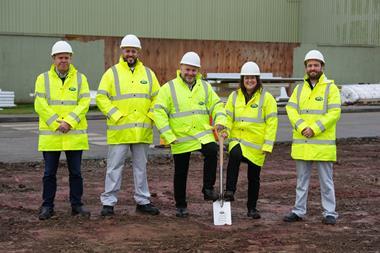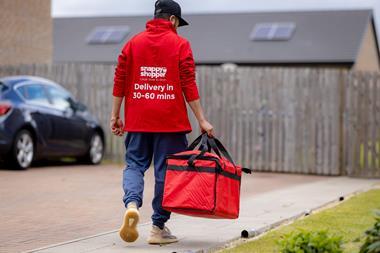There’s no shortage of data swirling around UK food and drink. But putting it to good use is a different matter. In the third article in our series exploring the secret to strategic decision-making in 2025, we uncover how brands and retailers can take the data they have and put it to work.
Be it on stock, price, product or consumer behaviour, the food and drink sector isn’t struggling with a lack of data.
However, taking that data and putting it to work to inform key strategic decisions across the business is another story.
Almost three-quarters of senior leaders say they struggle to get value from their data, according to one 2024 study by Appsbroker, with 70% admitting to only using a small subset and the same proportion struggling to manage their existing data estate.
That leaves brands and retailers at risk of falling behind the curve, warns Nick Whitfeld, a senior data and analytics partner at KPMG UK. ”The winning brands and retailers of the future are the ones that get to grips with this resource – and those that don’t just aren’t going to survive,” he says.
Why data readiness is essential
Whether it’s to drive new revenue streams, reduce cost or mitigate risk across the food and drink value chain, every single part of business strategy is in some way dependent on data and analytics capabilities. In today’s economic climate in particular, brands and retailers are increasingly seeking out ways to evaluate strategic trade-offs in order to sustain growth.
And data is an invaluable tool when it comes to making these decisions.
Read more in the series:
-
The ‘virtuous circle’: how to deliver personalisation and privacy
-
Risk vs reward: how brands and retailers can grow without the gamble in 2025
At PepsiCo, for example, “one of our key goals is to make Big Data more accessible to different parts of the business so that more colleagues and teams are empowered to make evidence-based decisions,” says the company’s senior director of insights Tracey Neis.
This is why “data readiness isn’t just nice-to-have, it’s essential,” says Anu Dhillon, head of data consulting at Dunnhumby. “When retailers properly centralise and master their customer information, they unlock targeted marketing that genuinely resonates with their customers,” she says. “Properly integrated data can transform customer engagement in ways that gut instinct simply cannot match.”
So, how can brands and retailers make better use of data as a vital decision-making tool?

Delivering a data-friendly culture
There are a number of common data missteps that Whitfeld encounters when working closely with senior leadership teams, he explains. For one, data sits in silos. That means “organisations might have the right data, the right tools and the right people, but rarely have the right person using the right data with the right tool”, he says.
Second, data quality is inadequate, creating “mayhem downstream” from where the data was originally created, thereby creating avoidable friction and waste throughout the business. And third, leadership teams often lack the curiosity or confidence to ask the right questions of data, or the humility to know when it should usurp gut instinct.
There are technological solutions to some of these hurdles – such as addressing the inefficiencies caused by legacy tech. As Helen Merriott, SVP, CPG lead at Publicis Sapient, points out: “Many brands and retailers are working with fragmented systems that don’t communicate effectively, making it difficult to get a single view of the customer or supply chain.”
But, first and foremost, a change in culture is key to a more effective data strategy.
“It’s like renovating your house while you’re still living in it – you need to strengthen the foundations without disrupting daily operations,” explains Dhillon.
Culture might feel like a “nebulous concept”, admits Whitfeld. “But what I mean by it is, as an organisation, are we asking the right questions? Are we seeking new insights to challenge our performance? Are we using algorithmic enablement to completely transform our business? Are we pushing ourselves to maximise the value from the data that we have, and seeking opportunities to derive new insights from data we don’t yet have?”
“Leadership buy-in is critical – without a clear vision from the top, efforts to integrate AI and data-driven decision-making often stall due to resistance or lack of understanding at the operational level.”
Helen Merriott, SVP, CPG lead at Publicis Sapient
It starts with leadership, he adds. “If the senior team aren’t pushing and challenging the numbers, and visibly driving decisions off the back of them, then you’re never going to get that culture flow.” They set the standard which then trickles down. But what does this mean in practice?
“Of course it will mean investment in data literacy and training, but it also means more than that. The best place to start is with a senior leader who is passionate about the value of data, who will drive the topic at the highest level, and to whom the data organisation reports; or the creation of ‘data safe spaces’ where teams present performance using live data (rather than handcrafting the story they would prefer to tell), with the freedom to experiment and get it wrong; and – critically – providing positive feedback to teams where their data-led insight has inspired action”.
“Leadership buy-in is critical – without a clear vision from the top, efforts to integrate AI and data-driven decision-making often stall due to resistance or lack of understanding at the operational level,” agrees Merriott.

How leading players are embedding data
This leadership buy-in informs the strategy at Global Brands, says UK sales director Mike Smith. The drink supplier has trained teams, including cross-functional champions, that ensure data isn’t kept in silos but is sourced and shared effectively.
They also place a big emphasis on the analytics stage and learning from data, says Smith. “We use the data to answer questions,” he says. “Where some people go wrong – especially from a sales and account management perspective – is thinking they have got the data and therefore they are going to talk about what the data is. We have to turn it on the head and let the data answer questions.” Overall, “we try to embed data into our culture, to take away those gut-based decisions,” he adds. “We’re trying to make sure we are utilising the data to make the right decisions, whether in terms of flavour trends or pure market insight.”
Culture has also been central to how recipe box provider HelloFresh has harnessed data across its business. “We’re fortunate to have a culture that embraces and understands the importance of data at all levels of the business,” says global vice president David Castro-Gavino. “We’ve achieved this by establishing clear governance and an organisational structure, which means it is well-managed, understood by decision-makers and shared across teams and markets to facilitate informed and insightful changes.”
HelloFresh also has a dedicated Data Alliance team to speed up insight – with some data downloaded in as little as 60 seconds. “Only by making access to data easy and having tangible examples of how its insight has led to enhancing the customer experience and increasing business success can you ensure a culture that is onboard with data and its importance.”
“For brands and retailers, with complex value chains that include all sorts of interdependencies, the ability to use data is going to be fundamental to strategic growth.”
Nick Whitfeld, senior data and analytics partner, KPMG
And at PepsiCo, it draws a distinction between ‘Big Data’ (quantitative, often numerical datasets) and ‘Thick Data’ (conversations, observations and cultural artefacts that tend to provide more contextual insight), says Neis.
“Combining our Big Data and Thick Data can give us both the statistical and human insight to make the best decisions for our business, our retail customers and our consumers,” she explains. For example, it used Big Data to identify Dry January as a strong opportunity to connect with consumers but Thick Data to flag the fact that “when we held deeper conversations with consumers, they revealed there is a real longing for the lost connection moments in the pub.” Its resulting January campaign was therefore rooted in this idea of connection.
Business leaders need to be aware that data’s role as a “core strategic asset” is only going to ramp up in the years ahead, sums up Whitfeld. “For brands and retailers, with complex value chains that include all sorts of interdependencies, the ability to use data is going to be fundamental to strategic growth. The journey starts from the top”.
To learn more about how KPMG’s experts can help your business, visit: KPMG Consumer
Or contact:
Linda Ellett, partner, head of consumer, retail and leisure: Linda.Ellett@kpmg.co.uk, or
Nick Whitfeld, a senior data and analytics partner: Nick.Whitfeld@kpmg.co.uk

















